Behind the Tailgate Tour: Team Traditions
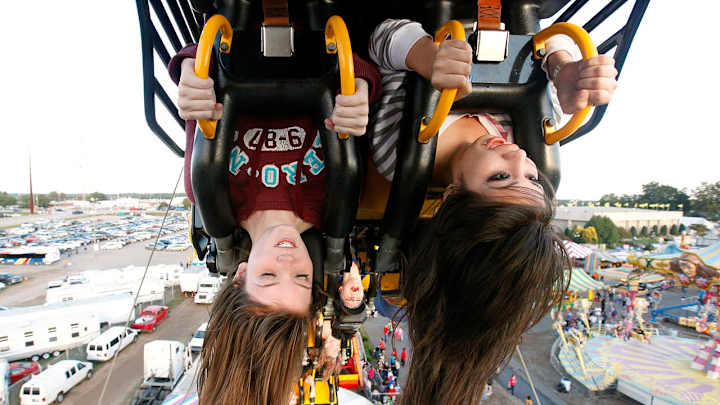
Behind the Tailgate Tour: Team Traditions
North Carolina State Fair

For nearly five decades, N.C. State fans have filled Carter-Finley Stadium weekends to cheer for the Wolfpack in football. Yet NCSU fans’ weekend tailgates can’t compete with the smorgasboard the arrives across the street each October. Carter-Finley sits just opposite the North Carolina State Fairgrounds, and for 10 days each fall the grounds host the North Carolina State Fair. Nearly one million visitors make the pilgrimage each year to the fair, which has been held annually since 1853.
South Carolina's Cockaboose
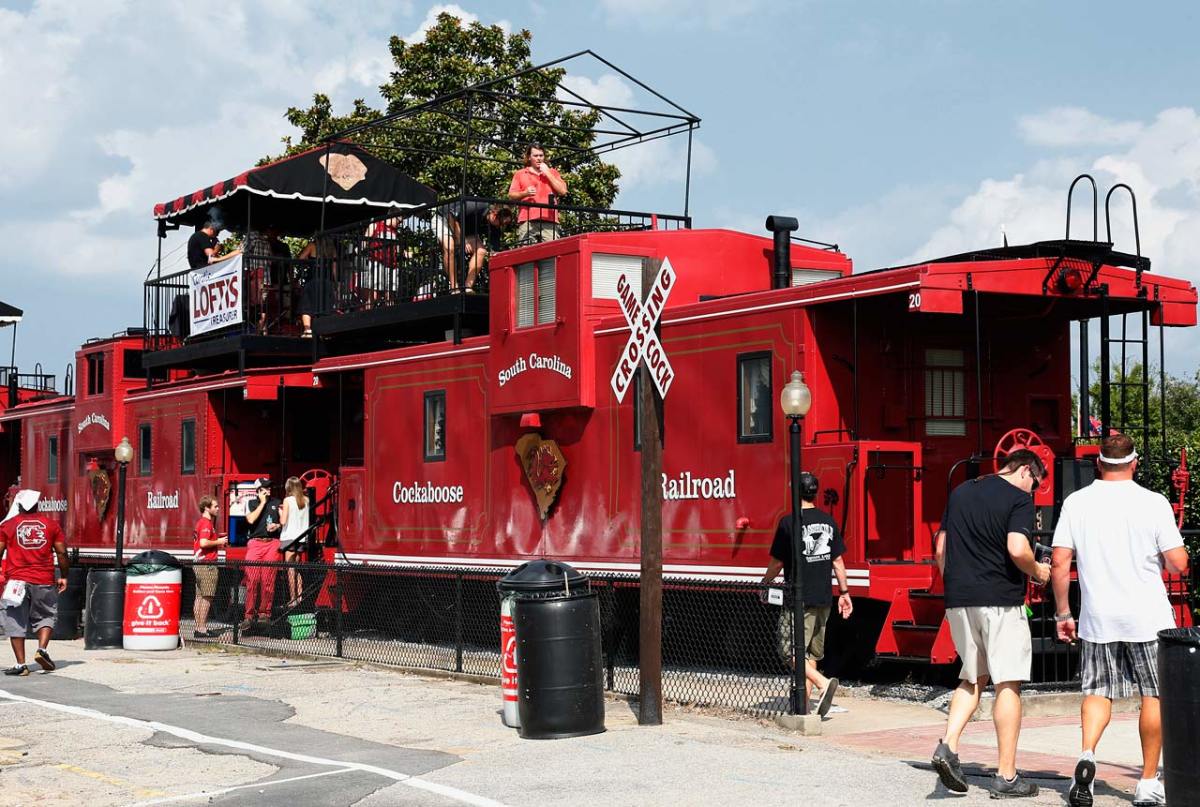
At South Carolina, players and fans train very seriously. The players train by lifting, and the fans lift a few on an actual train: the Cockaboose. Since 1990, when local real estate developer Ed Robinson purchased a lot of 22 train cars, fans have paid to party railroad-style before games at Williams-Brice Stadium. The cars are actual cabooses from the Illinois Central Railroad, decked out in opulence with wood floors, full bars, high-tech sound systems, rooftop patios and air conditioning to battle the brutal South Carolina heat early in the season.
FSU's Sod Cemetery
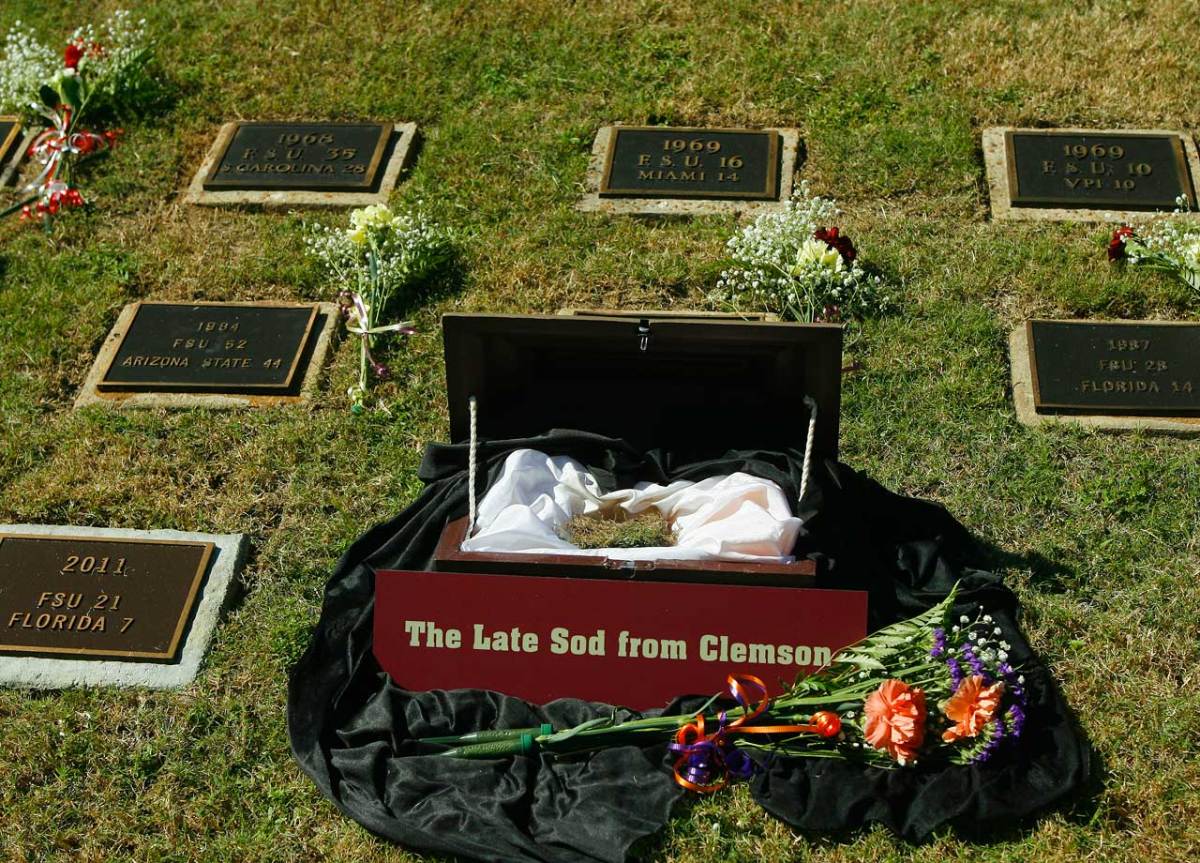
The biggest wins in Florida State history are etched deep in the memory of every Seminoles fan. But that’s not the only place they’re buried. For the last 52 years, FSU has memorialized each big road win and bowl game victory by grabbing a piece of turf and bringing it back to Tallahassee. Florida State’s Sod Cemetery is now home to dozens of dirt clods and the memories they evoke.
The U
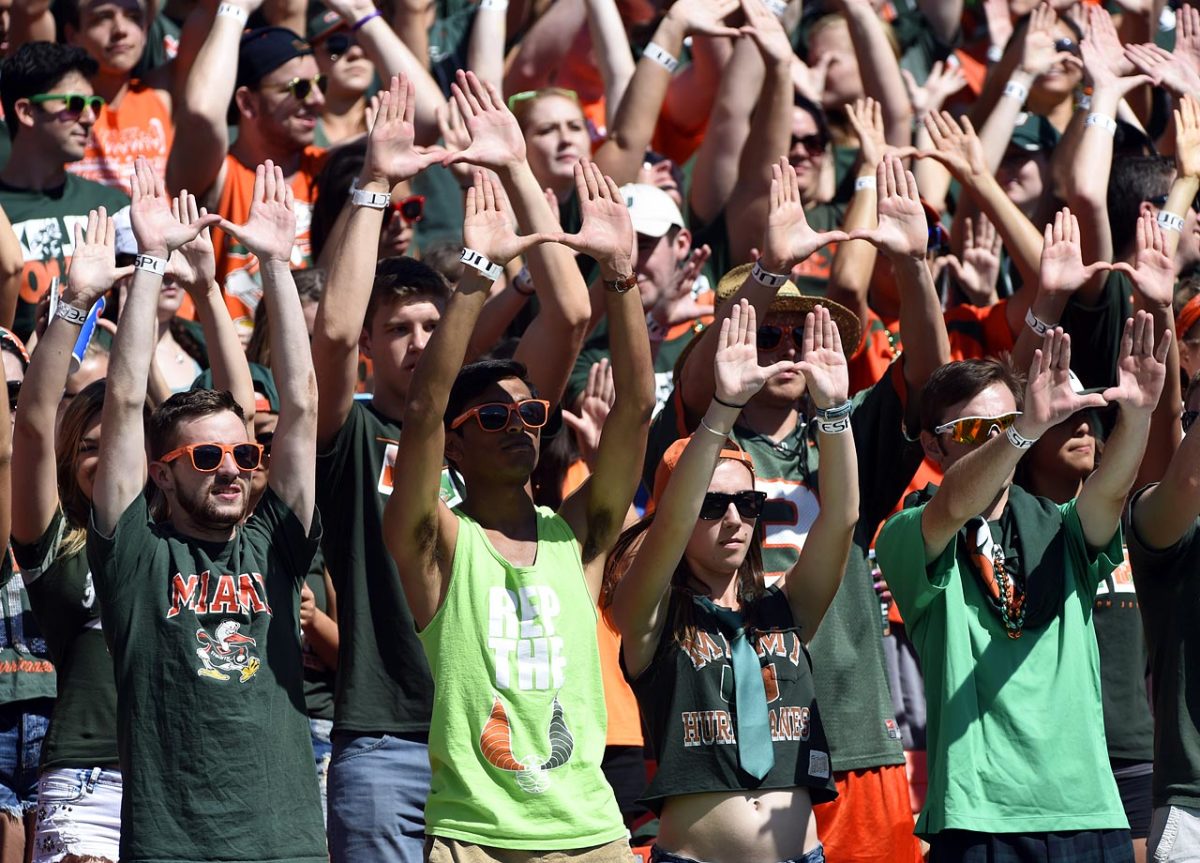
“The U” is the University of Miami, which burst onto the national scene in the mid-1980s and was one of college football’s most dominant programs for the next decade. The “U” comes from the school’s logo -- the distinct orange and green split-U that was adopted in 1973. While the logo goes back to the 1970s, the university says “Throwing up the U” was created for a home game against rival Florida State in 1992. It was meant as a counterpoint to FSU’s Tomahawk chop and the University of Florida’s Gator chomp.
Georgia Tech's Ramblin' Wreck
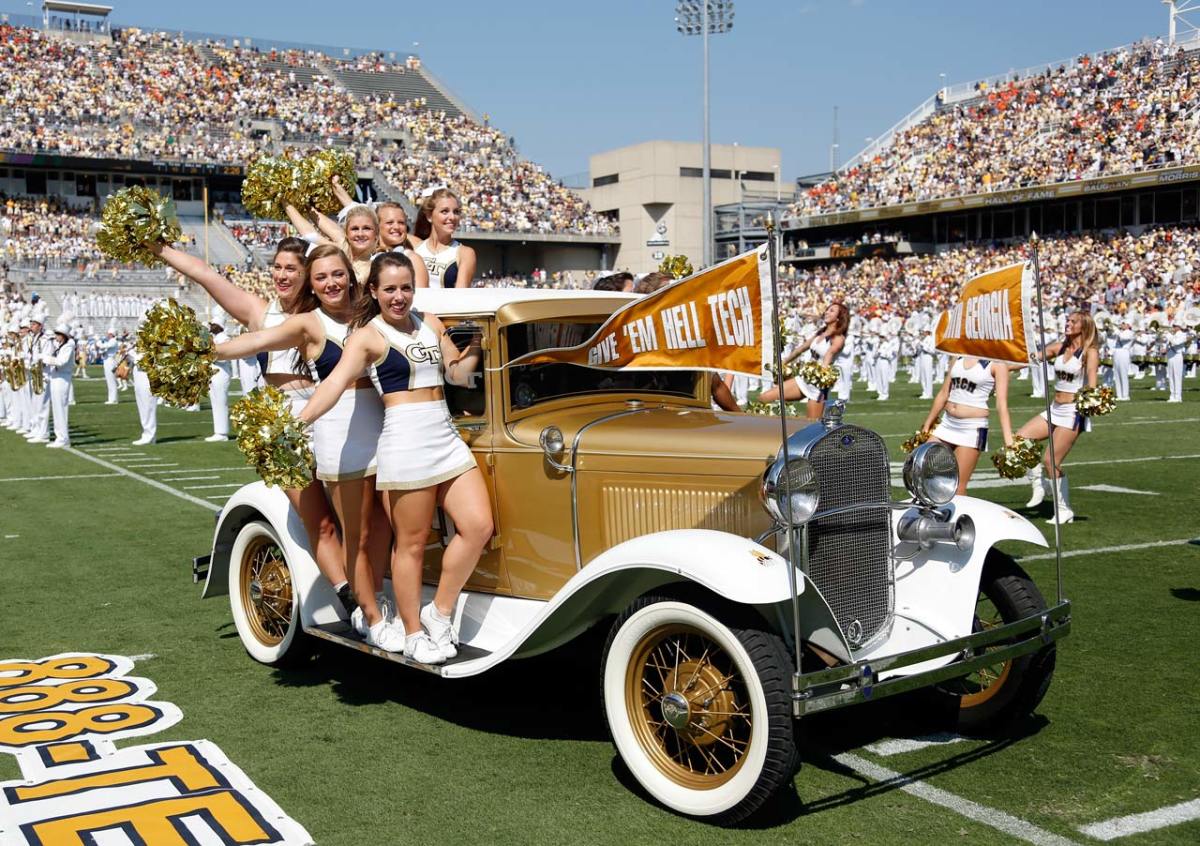
From drinking song to vehicular mascot, the history of the Ramblin’ Wreck is about as rambling as you would imagine. Georgia Tech’s official mascot is a 1930 Ford Model A sport coupe, painted GT gold to match the Yellow Jackets’ color scheme. The old jalopy whips around the field at Bobby Dodd Stadium in Atlanta, with Georgia Tech cheerleaders and GT’s stingy mascot, Buzz, clinging tightly.
The Ohio State University Marching Band
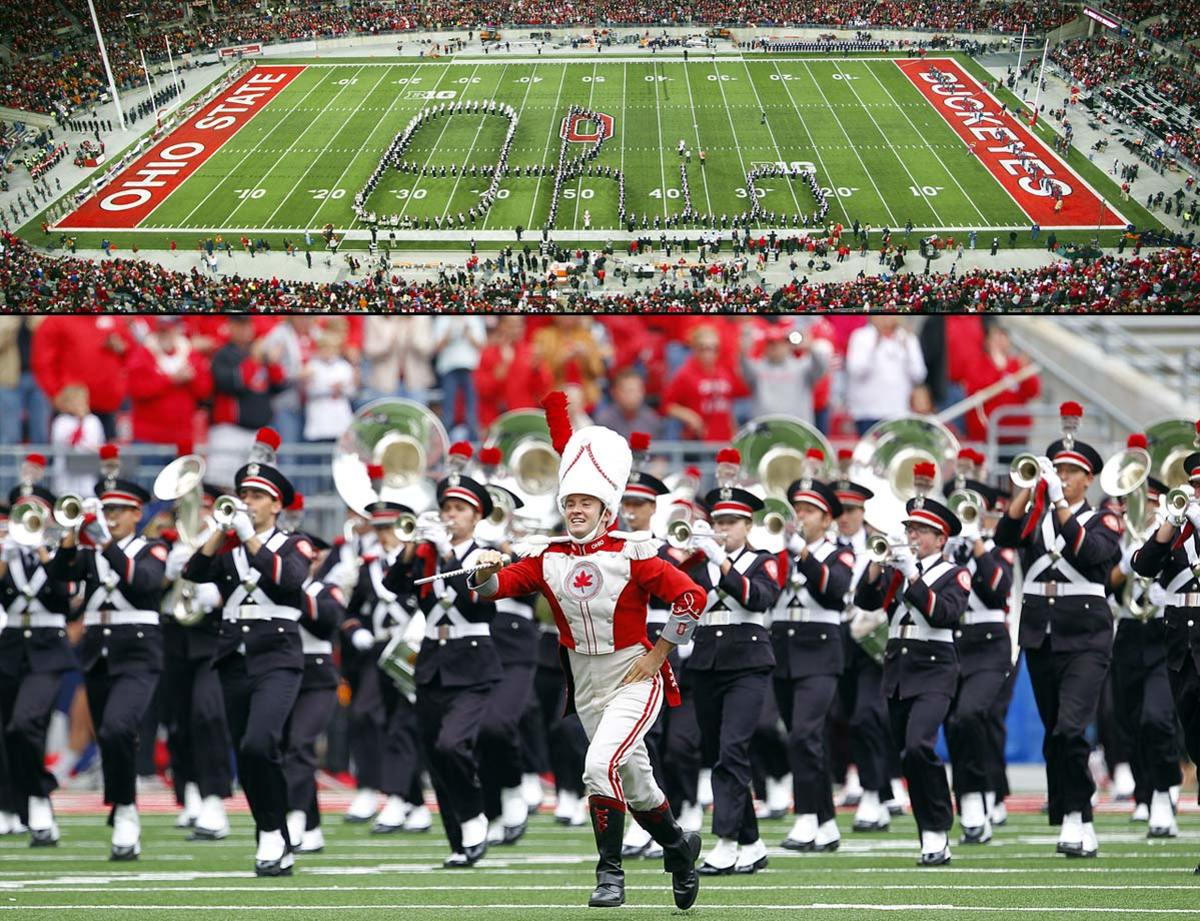
While the Buckeyes fortunes on the football field have risen and fallen over the years, the marching has long been known as The Best Damn Band In The Land. The band has always been known for its formations: the “Script Ohio” is one of the great traditions in college football, where the band spells out “Ohio” in cursive letters and lets a lucky sousaphone player or special guest dot the “i” in the word. The ban first performed Script Ohio back in 1936, and it remains a fan favorite.
Virginia Tech's cannon
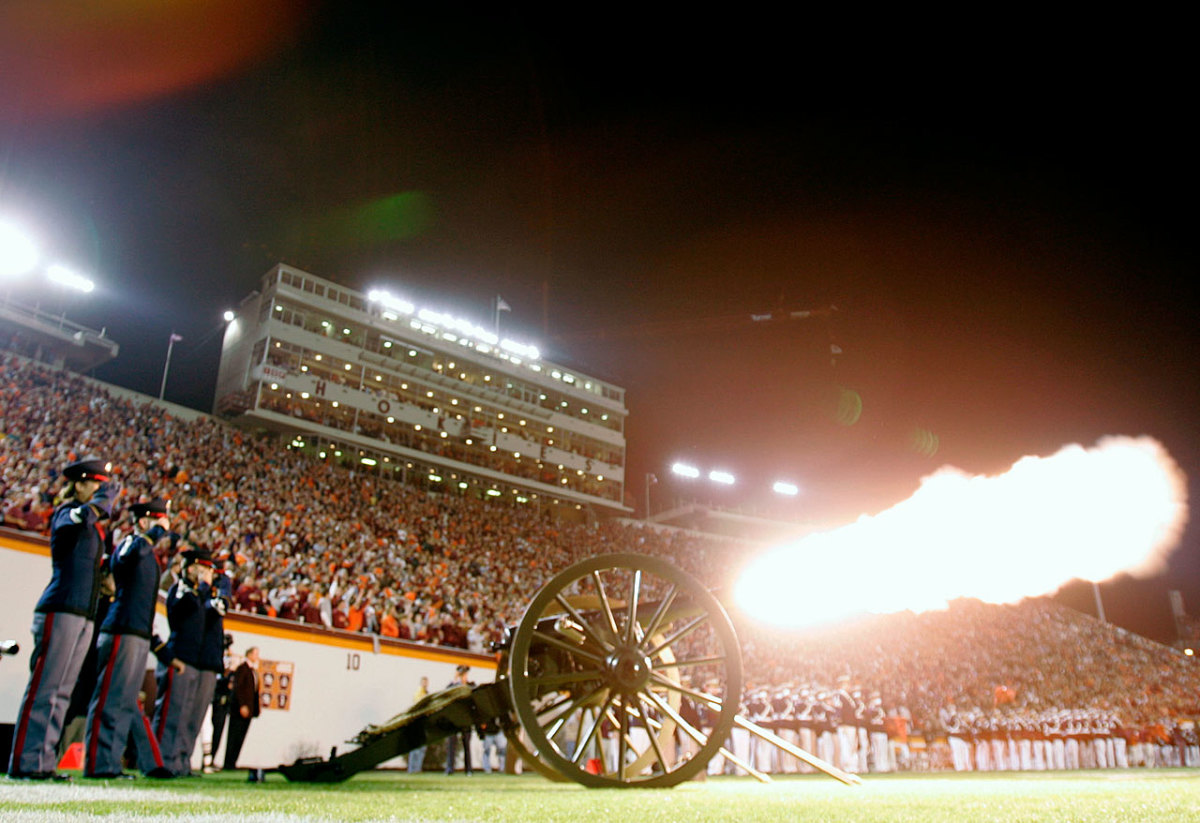
For 50 years, Virginia Tech fans (and opponents) have heard “Skipper” booming out during Hokies games. Skipper is the name of Virginia Tech’s working cannon, which fires off a blank blast each time the Hokies enter Lane Stadium and each time they score at home.
Nebraska's Sea of Red
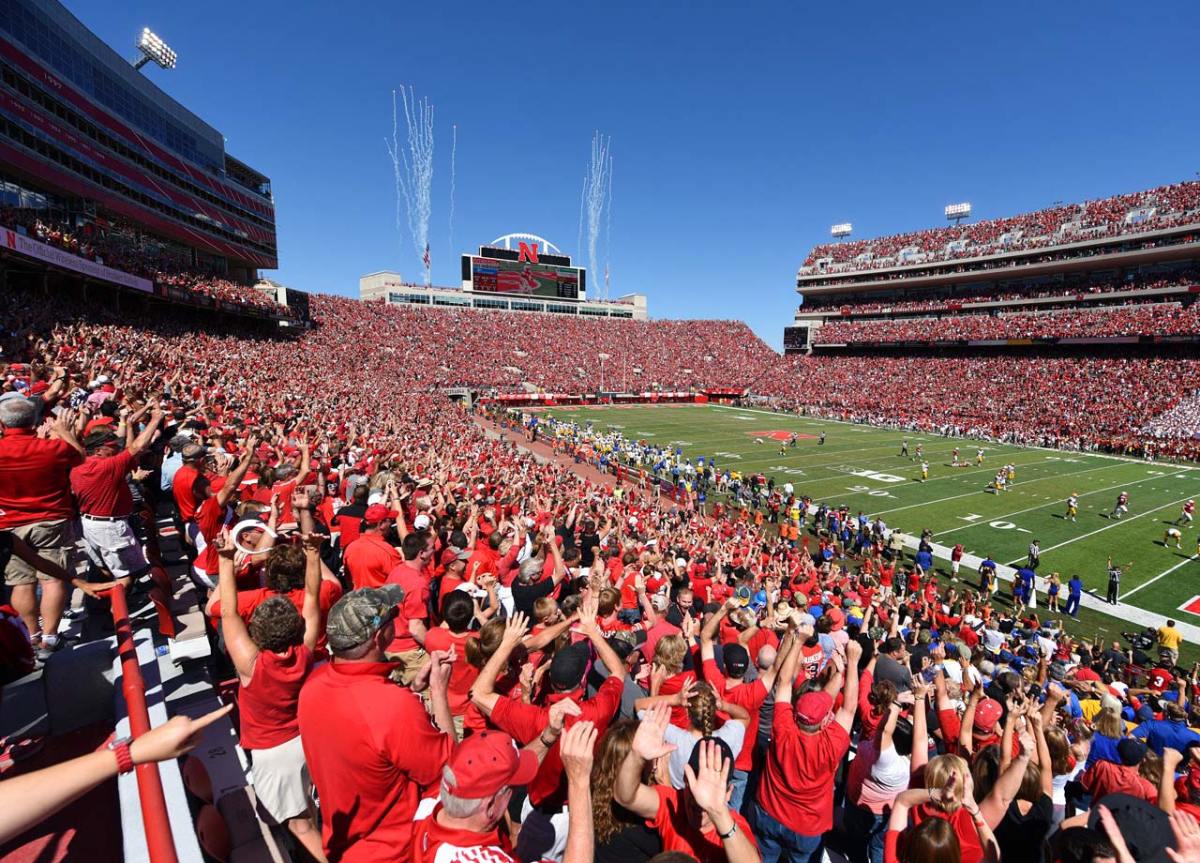
The Sea of Red is synonymous with Nebraska fans, who pack Memorial Stadium for every home game and stick out like stop signs at every away game. The crowds are 90,000 strong, a population that would make Memorial Stadium the third-largest city in Nebraska on game days, a fact Huskers fans proudly tout when they call themselves the “Greatest Fans in College Football.”
The Utah MUSS
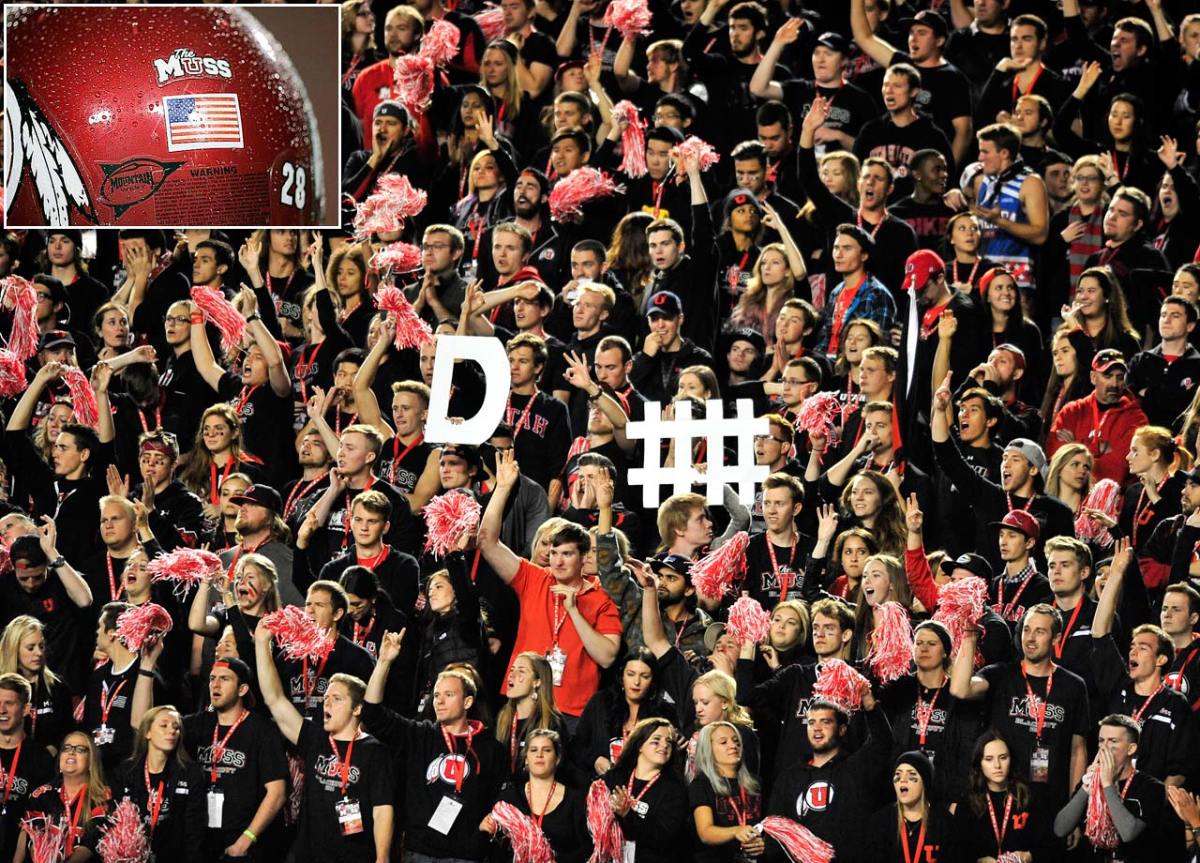
When Utah made the leap to the Pac-12 in 2011, the program brought along one of the most enthusiastic student sections in all of college sports: the MUSS. The name comes from the school song, though it is now an acronym for Mighty Utah Student Section. The MUSS hang a Roman numeral “V” over the bleachers to tally each false start penalty. Opponents often find themselves struggling to hear over the immense crowd noise, which, coupled with the roughly 4,700-foot high altitude at Rice-Eccles Stadium, gives the Utes quite the home field advantage.
Tennessee's Rocky Top
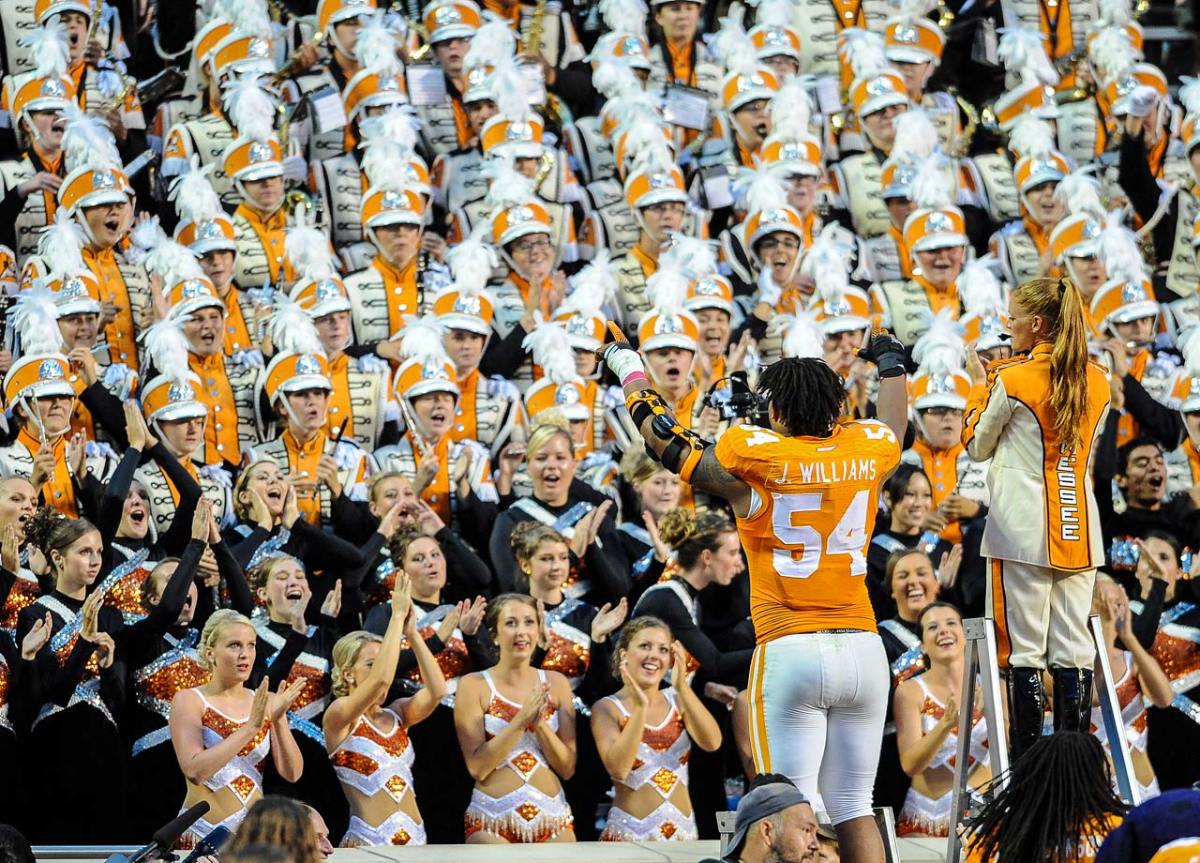
In Knoxville, Tenn., you can visit Rocky Top, sing “Rocky Top,” wear Rocky Top and shop at about a dozen Rocky Top establishments scattered around town. The actual Rocky Top is the summit of Thunderhead Mountain, a 5,500-foot feature of the Great Smoky Mountains that straddles the border of Tennessee and North Carolina. It is one of the defining topographical features of the Knoxville area, and most likely served as the inspiration for one of Tennessee’s signature songs: “Rocky Top.”
Oklahoma State's Pistol Pete
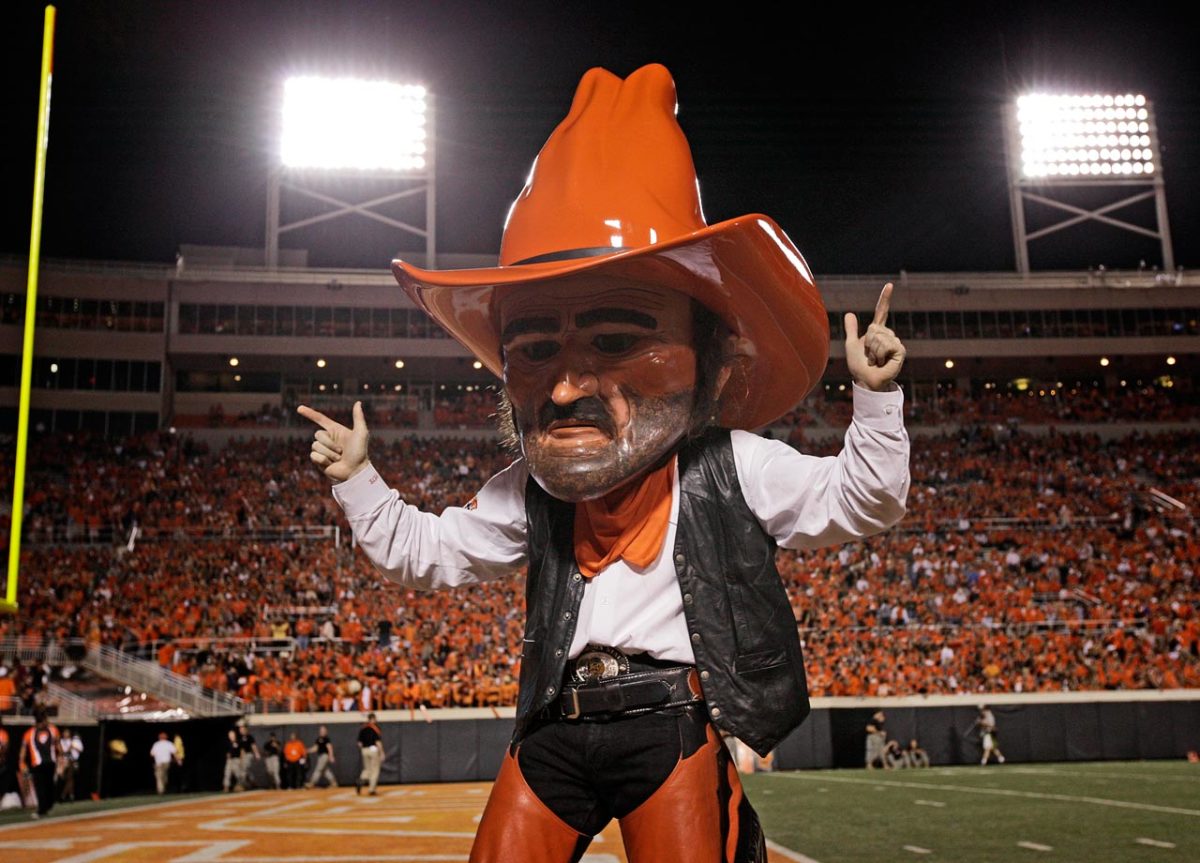
One of the most recognizable college mascots in the nation, Pistol Pete’s perpetually frozen face has stalked the sidelines at Cowboys games for more than 55 years. But Pistol Pete is actually based on a real person: legendary U.S. marshal and author Frank Eaton, one of the most enduring symbols of the Old West. In the dictionary, the word “cowboy” ought to include Eaton’s mustachioed mug.
UCLA Bruins team name
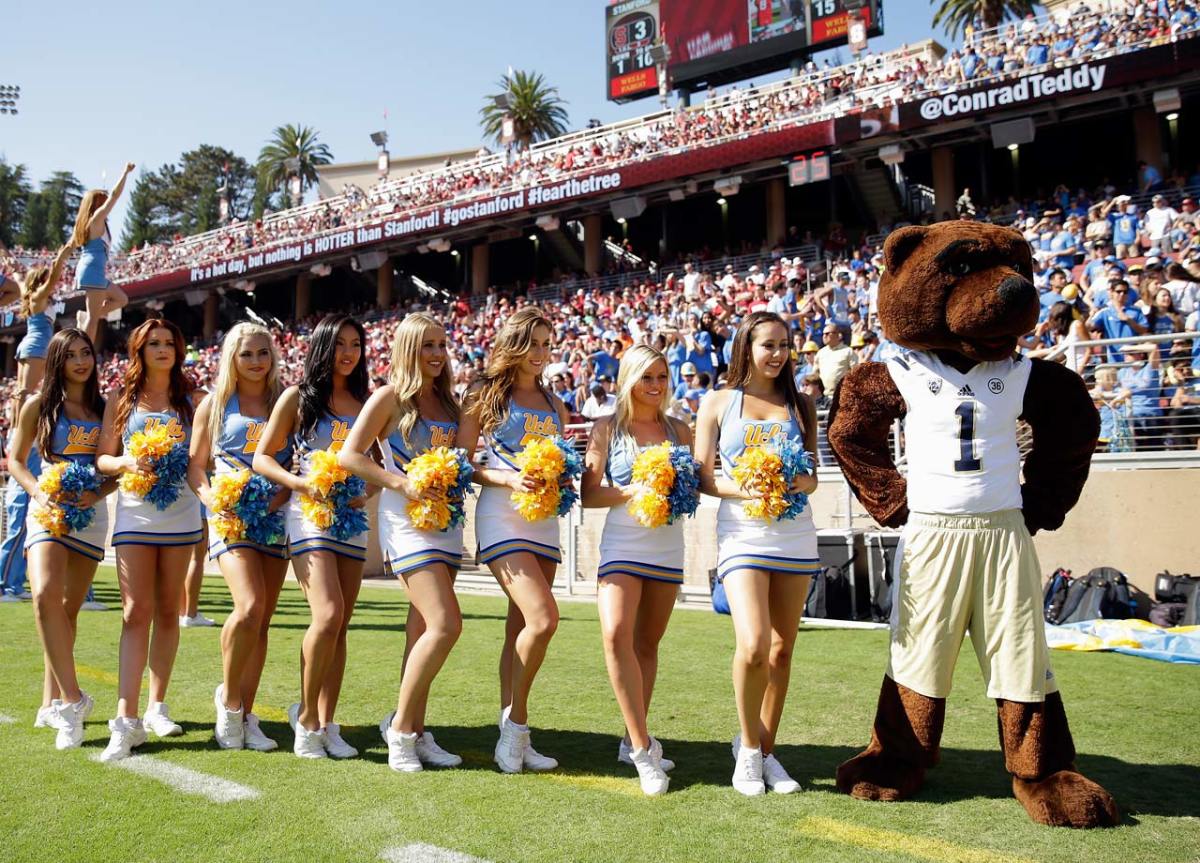
Initially, UCLA teams were known as the “Cubs,” while the University of California at Berkley went by the “Bears,” and later the “Golden Bears.” But students at UCLA resented the little brother status and rejected the Cubs nickname in favor of the fiercer “Grizzlies” nickname. The Grizzlies moniker lasted just two years. In 1926, UCLA joined the old Pacific Coast Conference, which already had some Grizzlies in the mix -- namely, the University of Montana. UCLA agreed to give up the Grizzlies nickname, and Cal bequeathed UCLA one of the variations on their Bear nickname: “Bruins.”
Iowa-Iowa State rivalry
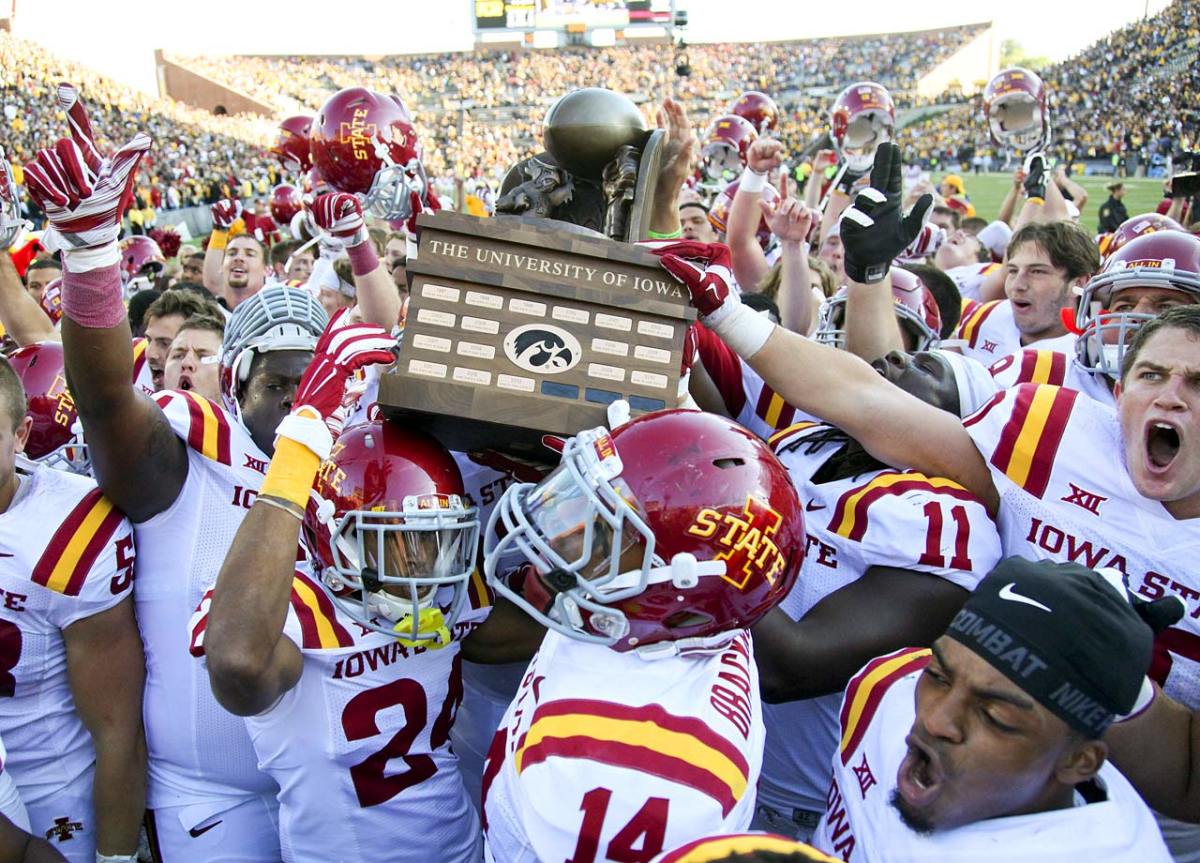
Officially, the matchup is known as the Iowa Corn Cy-Hawk Series, contested by the Iowa State Cyclones from Ames, and the Iowa Hawkeyes from Iowa City. The teams first met on the gridiron back in 1894, which makes this rivalry one of the oldest in college football. However, Iowa and Iowa State have only played each other in football on an annual basis since 1977. The two schools took a break from 1935 until 1977, and will square off until at least 2021 thanks to a new scheduling deal the schools signed last year.
Kansas State's purple and Bill Snyder
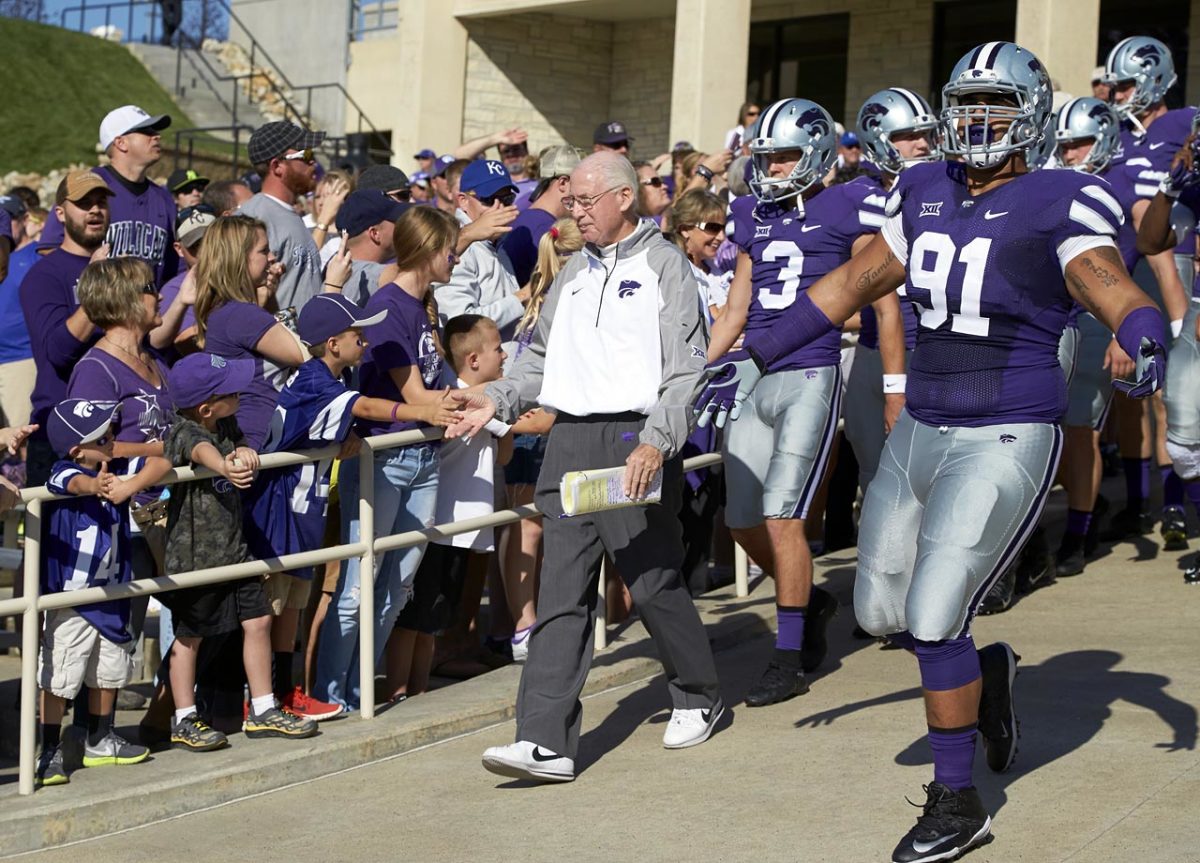
K-State is synonymous with two things: purple, and Bill Snyder. The purple adorns the uniforms, and Coach Snyder’s name adorns the stadium, where he still stalks the sidelines on game day. Royal Purple, to be specific, has been a part of Kansas State tradition since 1896. It dominates every K-State uniform, and is the name of the school yearbook. Snyder has only been with the team since the 1989 season, but in Manhattan, Kansas, he’s more ubiquitous than the team colors.
Oklahoma's Boomer Sooner nickname
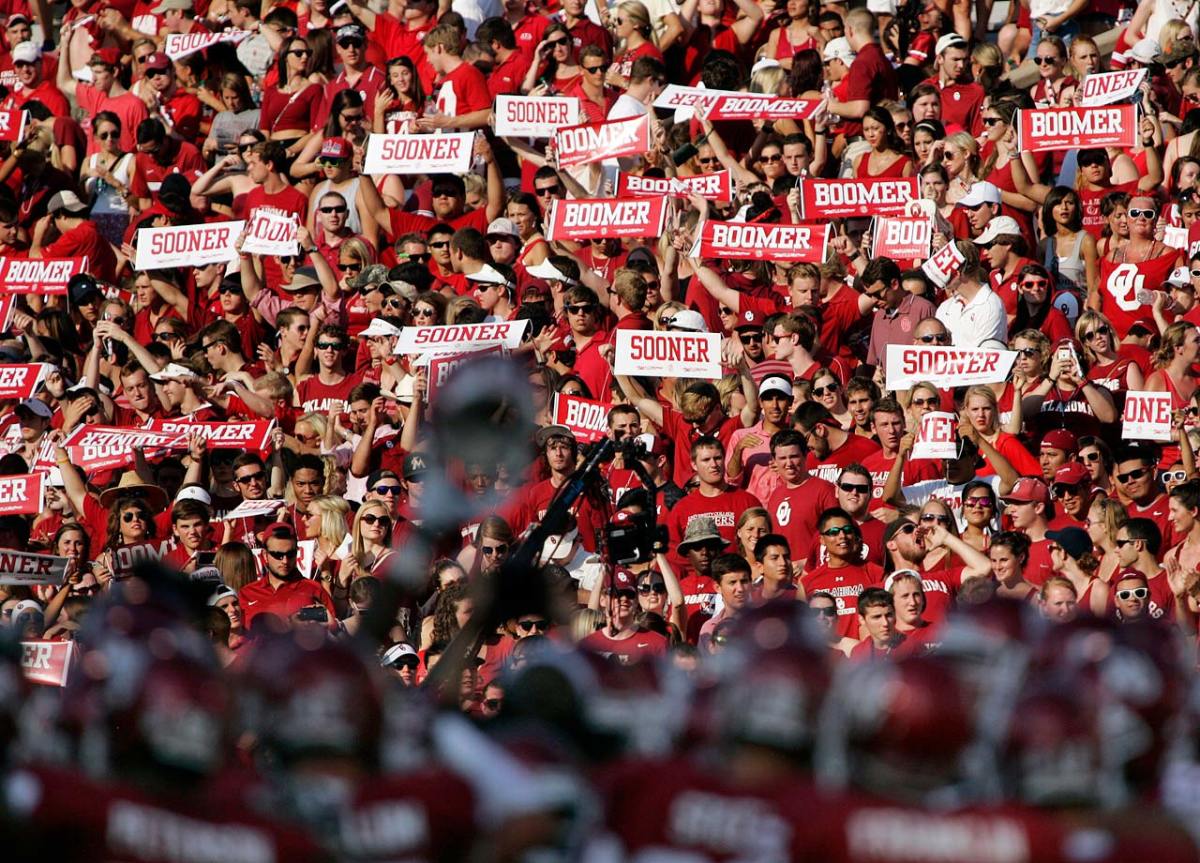
In the aptly named Sooner State, cries of “Boomer Sooner” ring out from OU campus to the panhandle and back. A grassroots movement to settle the Oklahoma Territory took hold around 1879 thanks to some fiery newspaper articles that described the land as a “Boomer’s Paradise.” A decade later, the first day of settlement went off like an Olympic race: settlers waited on the border for literal starter’s pistols to sound. At noon on April 22, the pistols went off. But some just couldn’t wait for the cue, and crossed too soon -- hence, Sooners.
